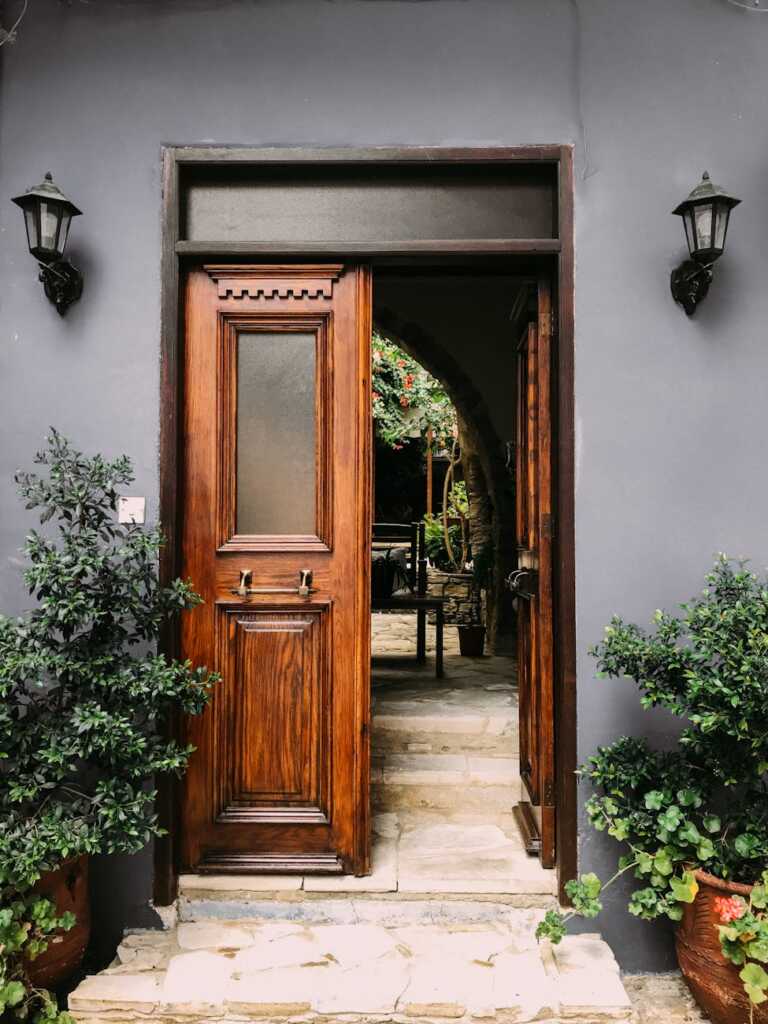Reclaimed wood has steadily gained popularity in interior design due to its unique ability to combine sustainability with timeless beauty. Among the various applications of reclaimed wood, interior doors stand out as a focal point that adds warmth, character, and a rich history to any space. Unlike standard doors made from mass-produced timber, reclaimed wood doors have a story to tell and offer a level of authenticity that cannot be replicated. By using wood that has been salvaged from old buildings, barns, or industrial structures, you are investing in a piece of history that has already proven its durability over time.

Why Choose Reclaimed Wood Interior Doors Over Standard Doors?
There are several compelling reasons why reclaimed wood doors are a superior choice compared to conventional interior doors. One of the primary benefits is the environmental impact. By choosing reclaimed wood, you are reducing the demand for newly harvested timber, which helps preserve natural forests and promotes sustainable practices. This is particularly important as the world shifts towards more eco-conscious design choices. Additionally, reclaimed wood doors require less energy to process than newly cut wood, making them a more energy-efficient option in the long run.
Sustainability and Environmental Benefits
Reclaimed wood is often sourced from structures that have been around for decades, even centuries. This gives it an inherent durability and strength that many new materials lack. Not only does using reclaimed wood reduce the need for logging, but it also lowers the carbon footprint of your interior design projects. As sustainability becomes more of a priority for homeowners and businesses alike, choosing reclaimed wood doors aligns with eco-friendly goals and contributes to reducing waste in landfills.
Uniqueness and Aesthetic Appeal
One of the standout features of reclaimed wood doors is their unique, one-of-a-kind appearance. Each door made from reclaimed wood tells its own story, with natural imperfections, knots, and grains that give the wood character. These doors are far from uniform; each piece is a work of art that adds warmth and charm to a room. Whether you opt for a rustic barn door, a sleek modern design, or a more vintage-inspired look, reclaimed wood can be customized to suit your personal style. This inherent uniqueness is something that standard doors, made from newer and mass-produced materials, cannot offer.
Durability and Longevity
Unlike standard doors, which may wear out or deteriorate over time due to inferior materials or lack of proper treatment, reclaimed wood doors have already stood the test of time. The aging process of the wood, combined with careful restoration techniques, results in a door that is both visually appealing and highly durable. The natural oils and resins within the wood, which have been preserved over the years, give reclaimed wood doors an added layer of resistance to wear and tear. As a result, they can last for decades, if not longer, with proper care.
Design Flexibility: How Reclaimed Wood Doors Can Fit Any Interior Style
One of the most versatile aspects of reclaimed wood doors is their ability to seamlessly integrate into a wide variety of interior styles. Whether your home is traditional, modern, rustic, or industrial, reclaimed wood doors can complement any design aesthetic. Their natural textures and rich hues make them a perfect fit for spaces that need a touch of warmth and sophistication.
Rustic and Traditional Interiors
For those who appreciate a more rustic or traditional design, reclaimed wood doors can create an inviting atmosphere with their vintage appeal. A weathered barn door or a distressed panel door adds a cozy, lived-in feel to any room, making it perfect for country or farmhouse-style interiors. The raw, organic quality of the wood enhances the charm and authenticity of these spaces, making them feel both timeless and comforting.
Modern and Industrial Spaces
In contrast, reclaimed wood doors can also work beautifully in modern and industrial spaces. The combination of raw wood and sleek hardware creates a striking contrast that gives these spaces a unique edge. A reclaimed wood door with simple lines, paired with matte black or brushed metal handles, can enhance the minimalist aesthetic of a modern apartment or urban loft, giving it an element of warmth and texture without overpowering the design.
Blending Styles with Reclaimed Wood
Reclaimed wood’s ability to adapt to different styles makes it a popular choice for mixed-design interiors. For instance, you might choose a reclaimed wood door for a transitional style home that blends contemporary and traditional elements. The door serves as a statement piece while maintaining harmony with other elements in the space. By incorporating reclaimed wood doors, you add an organic, timeless element that softens and balances more modern or industrial features.
Maintenance and Care of Reclaimed Wood Interior Doors
Although reclaimed wood doors are known for their durability, they still require proper maintenance to ensure their longevity. Over time, the wood can dry out and lose its natural oils, which can cause it to become more susceptible to damage. Regular cleaning with a soft cloth and avoiding harsh chemicals is essential in preserving the appearance and integrity of the wood. In addition, occasional re-oiling or re-waxing helps to restore moisture and prevent the wood from cracking or warping. With the right care, a reclaimed wood door can last a lifetime, continuing to improve with age as it develops a beautiful patina.
Protecting from Environmental Factors
When installing reclaimed wood doors, it’s important to consider the environment in which they will be placed. Excessive exposure to direct sunlight or extreme humidity can cause the wood to expand or contract. Installing reclaimed wood doors in areas with stable temperature and humidity levels will help minimize these issues. For example, it’s best to avoid placing them in areas with high moisture, such as bathrooms, unless they are properly sealed and treated for such conditions.
Repairing and Restoring Reclaimed Wood Doors
In the rare event that a reclaimed wood door becomes damaged, it’s important to address repairs promptly to prevent further deterioration. The beauty of reclaimed wood lies in its ability to be repaired and restored, often without losing its character. Small scratches or dents can be sanded down and refinished, while more significant damage may require replacing individual planks. If done properly, repairs can be virtually undetectable, allowing the door to continue its role in your home for years to come.
Cost and Availability of Reclaimed Wood Interior Doors
While reclaimed wood doors may come at a higher initial cost compared to standard doors, their value far exceeds the price tag when considering their sustainability, durability, and unique character. Prices for reclaimed wood doors vary depending on the type of wood, the quality of craftsmanship, and the complexity of the design. However, for many homeowners, the investment is well worth it for the timeless appeal and long-lasting quality of these doors.
Reclaimed wood doors can be found through specialty suppliers who focus on sustainable building materials. When purchasing reclaimed wood doors, it’s important to inquire about the wood’s origin, treatment processes, and any certifications that ensure its quality. The availability of reclaimed wood doors continues to grow as more manufacturers embrace sustainable practices and demand for eco-friendly home design increases.
Conclusion: The Lasting Appeal of Reclaimed Wood Interior Doors
Reclaimed wood interior doors offer an unparalleled combination of beauty, durability, and sustainability. Whether you’re renovating an old home or outfitting a new space, these doors bring a touch of history and authenticity that standard doors simply cannot match. With their ability to blend seamlessly into various design styles, provide long-lasting functionality, and contribute to a more sustainable lifestyle, reclaimed wood doors are a smart choice for any home. Their timeless appeal will continue to captivate homeowners and designers alike for years to come.
